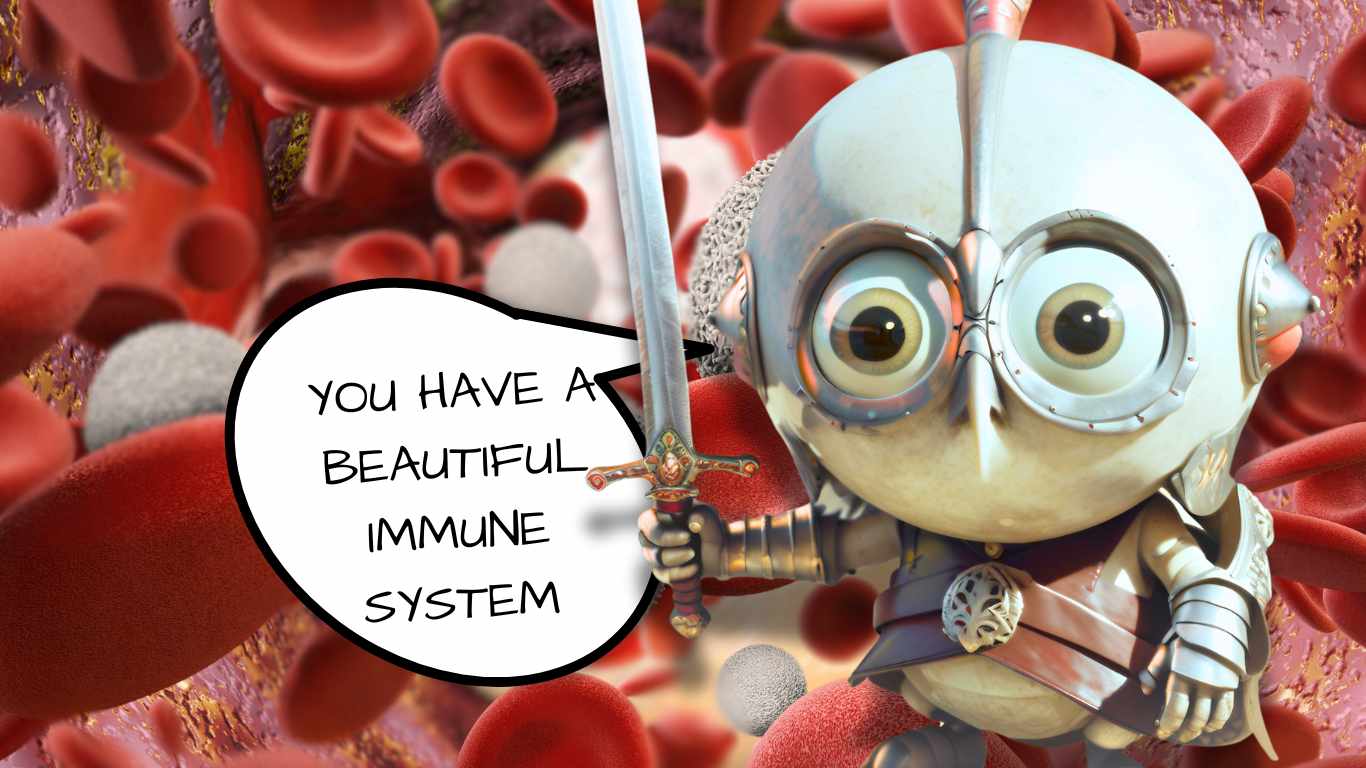Your cart is currently empty!

Understanding the Complement System
The complement system, comprising circulating and membrane-associated proteins, plays a crucial role in defending against microbial invaders. Comprising three main components—complement factors, complement receptors, and regulatory proteins ;the system orchestrates a cascade of responses to combat pathogens effectively. Brace your self because you’re going to see a lot of flow charts in this article. For a broader overview, see the article on components of the immune system.
Key Components of the Complement System:
The complement system is a collection of circulating and membrane-associated proteins that are important in defence against microbes. Complement system has 3 components:
- Complement factors
- Complement receptors
- Proteins that regulate the system
The complements go through a cascade of reactions to form the end products that act on immune cells to activate them, and on microbial cells to destroy them. There are several complement pathways through which those end products are formed.
Complement Pathways:
- Alternative Pathway
- Classical Pathway
- Mannose Binding Lectin Pathway
All pathways converge at the formation of C3 Convertase enzyme. This enzyme is essential for initiating the Terminal pathway crucial for microbial destruction.
Classical Pathway
The antigen antibody complex becomes the trigger for the initiation of the classical pathway of the complement cascade. The C3 convertase formed in this pathway is made of C4b2a. Since this involves the formation of antigen antibody complexes, this counts as a part of the adaptive immunity.
![]() Hereditary Angioedema
Hereditary Angioedema
A regulatory protein called C1 inhibitor stops complement activation at the stage of C1 activation. This prevents the formation of C4b2a in the classical pathway and, hence, overactivity of the complement system. The deficiency of this inhibitor causes excessive activation of C1, which causes the body to produce vaso-active protein. This results in the leakage of fluid in tissues, mainly in the Larynx.
![]() C1, C2 & C4 Deficiency
C1, C2 & C4 Deficiency
Deficiency of these components will cause malfunction in the classical pathway. The inability to clear the immune complexes may result in development of autoimmune diseases, particularly SLE. The malfunction of the complement pathway may also cause an increased susceptibility to encapsulated bacteria such as H. influenzae and N. Meningitides.
Alternative Pathway
This pathway is initiated by various bacterial cell wall components or CRP binding to microbes, which triggers the spontaneous hydrolysis of C3. The C3 convertase enzyme formed here is made of C3bBb, which is essential for the terminal pathway. Bacterial cell wall components such as endotoxins, inulin, yeast cell wall and cobra venom can activate this pathway. You might wonder why a C3 convertase enzyme is even necessary, if the C3 can be split spontaneously through this pathway. The reason is, the C3 broken down this way is not enough to make end products through the alternate pathway alone, so the making of C3 convertase accelerates the process. Here, the C3bBb (C3 Convertase) not only initiates the Terminal pathway but also accelerates the Alternative pathway to make more C3bBb, creating a feedback loop.
However, it’s important to note that this feedback loop is tightly regulated to prevent excessive complement activation, which could lead to tissue damage. Regulatory proteins such as Factor H and Properdin play crucial roles in controlling complement activation and maintaining immune homeostasis.
![]() Factor H and I Deficiency
Factor H and I Deficiency
Factor I and Membrane Cofactor Protein (MCP) cleaves C3b into inactive fragments so that the feedback loop is stopped. Factor H also serves as a cofactor for this process. The deficiency of factor H and I result in an increased complement activation and reduced levels of C3, because of its consumption, causing increased susceptibility to infections.
Mannose Binding Lectin Pathway
Mannose is a component of the microbial cell wall; essentially, an endotoxin. In contrast, Mannose Binding Lectin is a plasma protein which is circulating in the blood that binds to Mannose. The bound MBL can cleave C2 and C4. The C3 convertase formed in this pathway is C4b2a, which is the same as the C3 convertase formed in the classical pathway. Deficiencies in the lectin pathway generally manifest as recurrent pyogenic infections in neonates.
Terminal Pathway and Microbial Destruction:
The terminal pathway, activated by C3 convertase, culminates in the formation of C5 convertase. The C5 convertase breaks down C5 into C5a and C5b. The C5b binds to the microbe and acts as an anchor to the factors C6,7,8 and 9 to clusters together. This leads to the assembly of the Membrane Attack Complex (MAC). MAC creates channels in microbial membranes, facilitating fluid influx and eventual microbial destruction. Deficiency of any factor in this pathway may present as recurrent Neisseria infections.
Functional Roles:
- Chemotaxis: C5a attracts neutrophils to sites of microbial invasion.
- Microbial Killing: Formation of MAC with C6-C9 components aids in microbial elimination.
- Inflammatory Initiation: C3a and C5a initiate acute inflammation by triggering mast cell degranulation and increasing capillary permeability.
- Opsonization: C3 enhances microbial attachment to phagocytes, facilitating their clearance.
- Immune Complex Clearance: Removal of Ag-Ab complexes via phagocytosis by follicular dendritic cells.
Significance in Adaptive Immunity:
C3 factors play a crucial role in activating B cells by providing a second signal, enhancing the immune response against pathogens.
In conclusion, the complement system emerges as a sophisticated defence mechanism vital for combating microbial threats, orchestrating a cascade of responses crucial for immune surveillance and defence.
One response to “Understanding the Complement System”
-
[…] Immunity] D[Barriers] E[Cells] F[Soluble Factors] K[Humoral Immunity] L[Cell-Mediated Immunity] M[Complement System] A –> B; A –> C; B –> D; B –> E; B –> F; C –> K; C –> L; B –> M; C –> […]



Leave a Reply